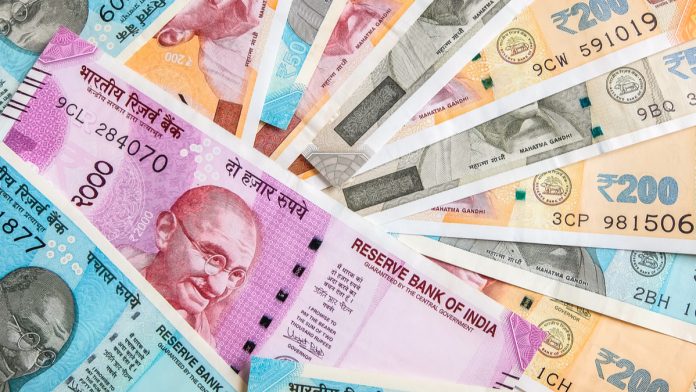- Indian Rupee (INR) falls after China data misses
- RBI expected to hike rates in June
- US Dollar (USD) eases versus major peers but still near 20-year high
- US GDP forecast cut by Goldman Sachs
The US Dollar Indian Rupee (USD/INR) exchange rate is rising on Monday, adding to gains across the previous week. The pair gained +0.67% last week, settling on Friday at 77.47. At 10:00 UTC, USD/INR trades +0.5% at 77.89.
The Rupee trades under pressure amid growing concerns over the health of the Chinese economy. Chinese data disappointed with retail sales plunging to -11.1% year on year in April, much worse than the -6% fall forecast and well below the -3.5% decline recorded in March.
Chinese industrial production also fell -2.9% year on year dropping from 5% growth in March. The data raises concerns over the hard impact of the ongoing COVID lockdowns and what this means for growth in Asia and more broadly globally.
Separately the Reserve Bank of India is expected to follow the May interest rate hike with another hike at its June monetary policy meeting. This comes after retail inflation jumped to an eight-year high in April and remained above the central bank’s 4-month tolerance for a fourth straight month.
The US Dollar is rising versus the Rupee but falling versus its major peers. The US Dollar Index, which measures the greenback versus a basket of major currencies, trades -0.1% at the time of writing at 104.48, building on gains from last week.
The US dollar is edging a few points lower but remains near its 20-year high reached in the previous week.
The USD has benefitted from safe-haven demand amid growing concerns over persistently high inflation in the US and expectations that the Federal Reserve will need to act aggressively to bring inflation back towards the 2% target.
The Fed has hiked rates by 0.75% over the past two FOMC meetings and is expected to raise rates by a further 0.5% over the coming two meetings.
Goldman Sachs cut its forecast for US economic growth this year to 2.4% and 1.6% in 2023, down from 2.6% and 2.2% previously.





